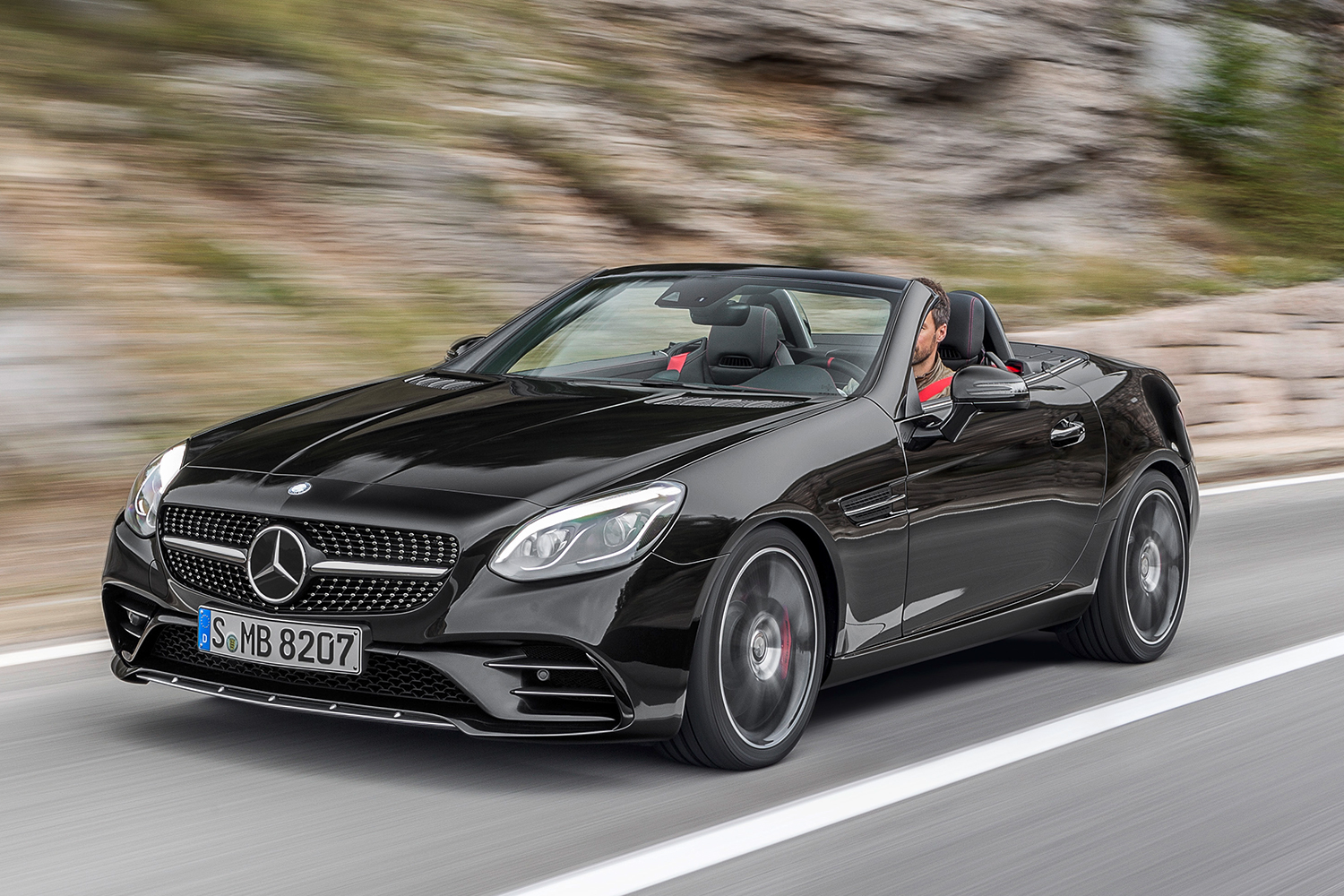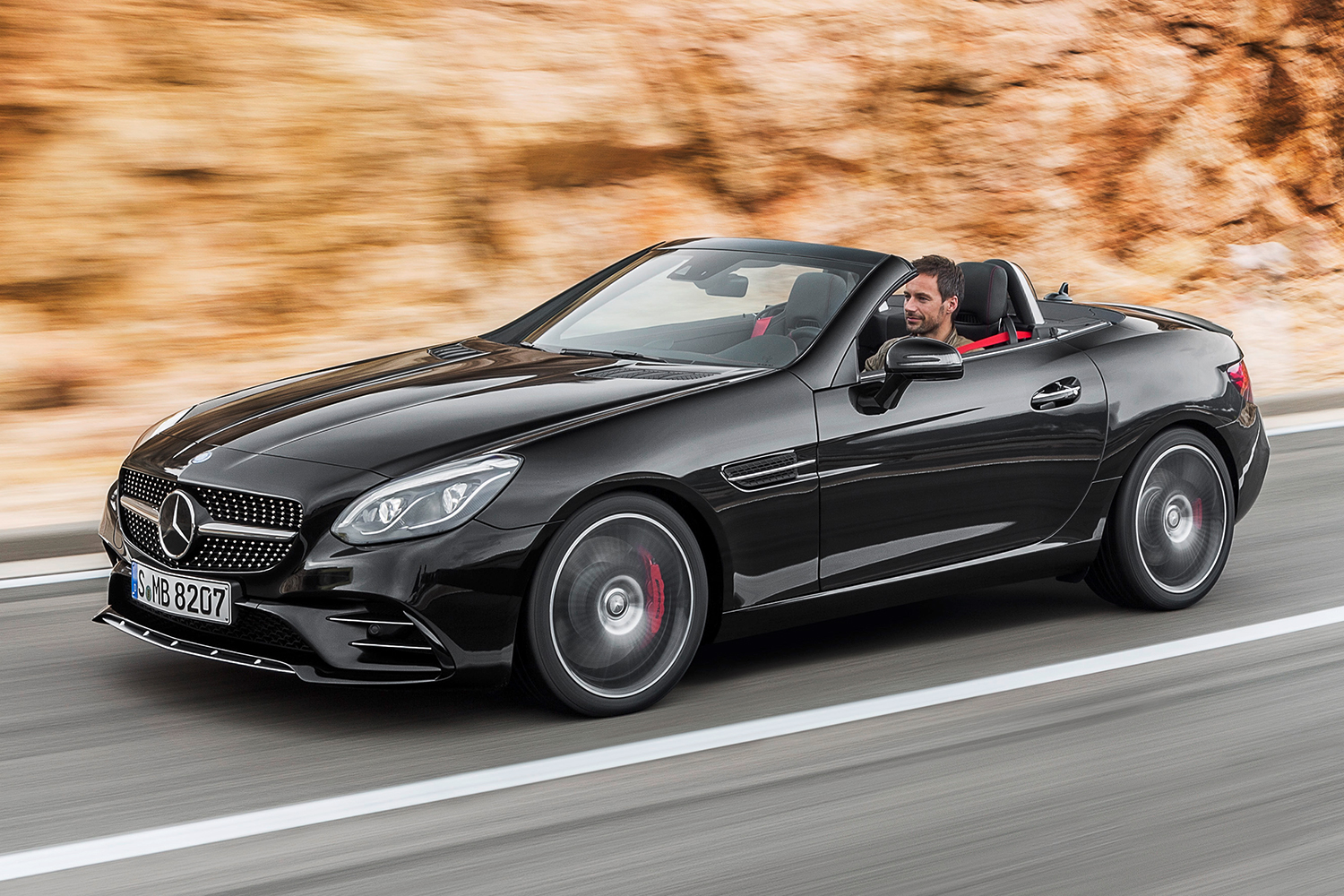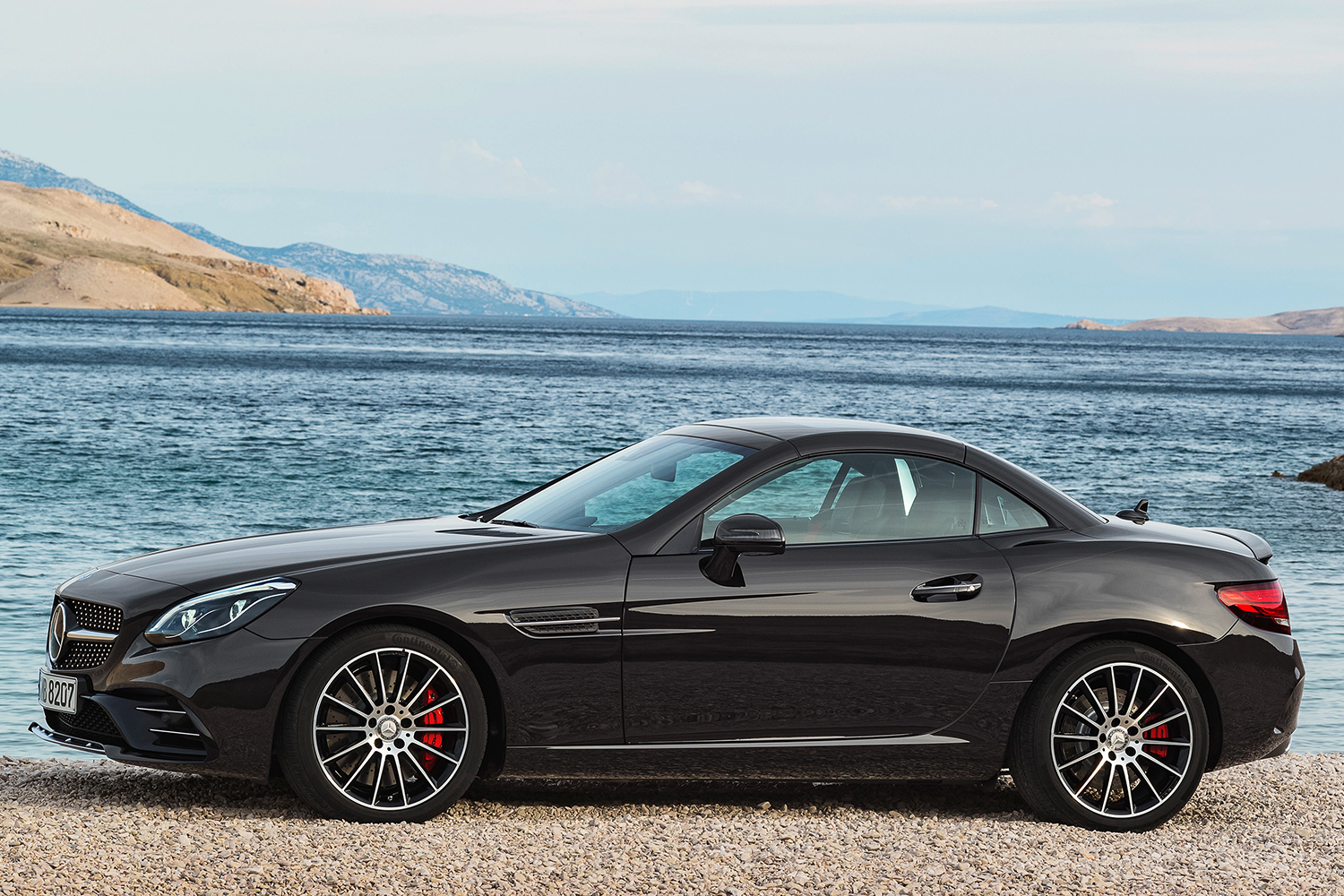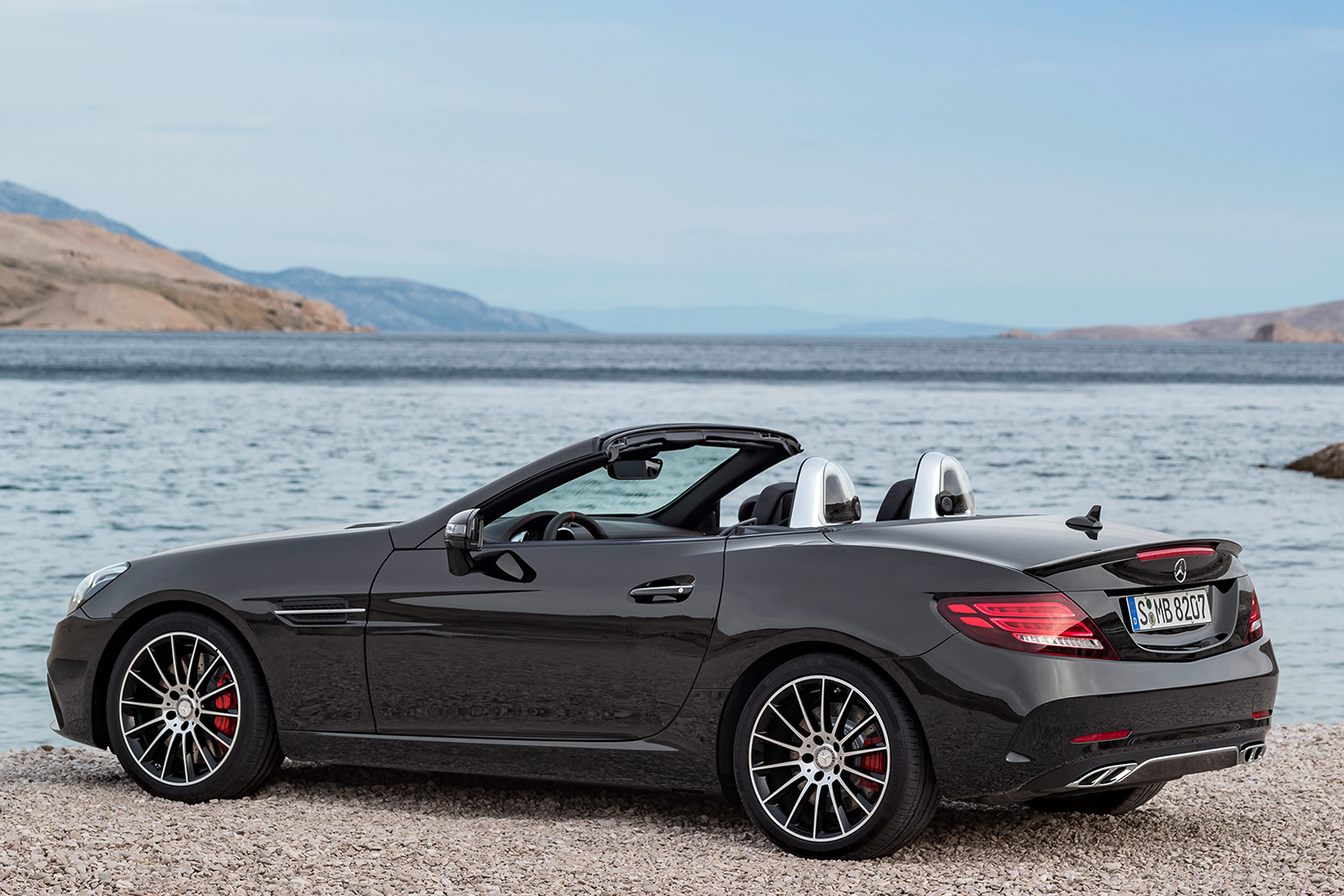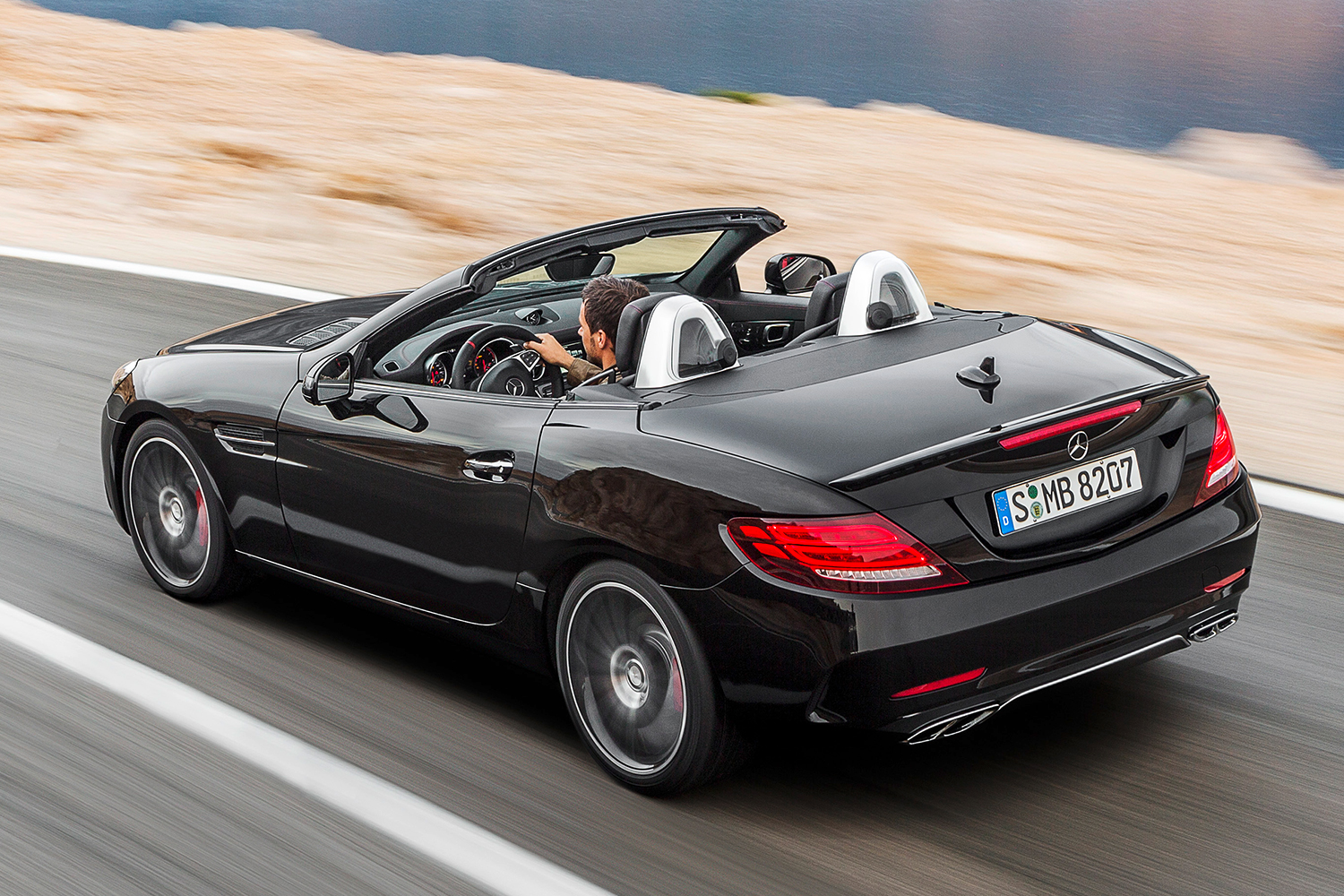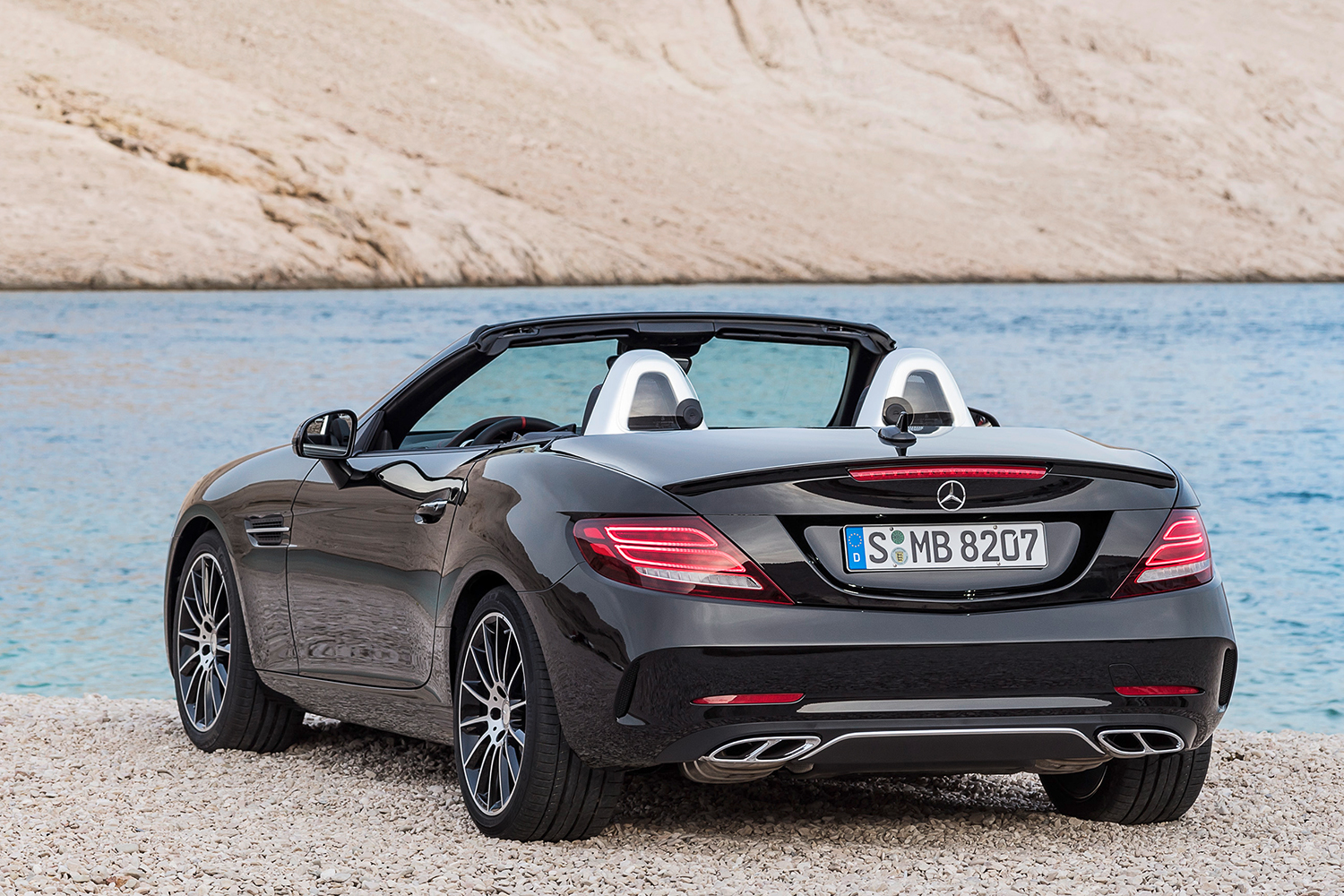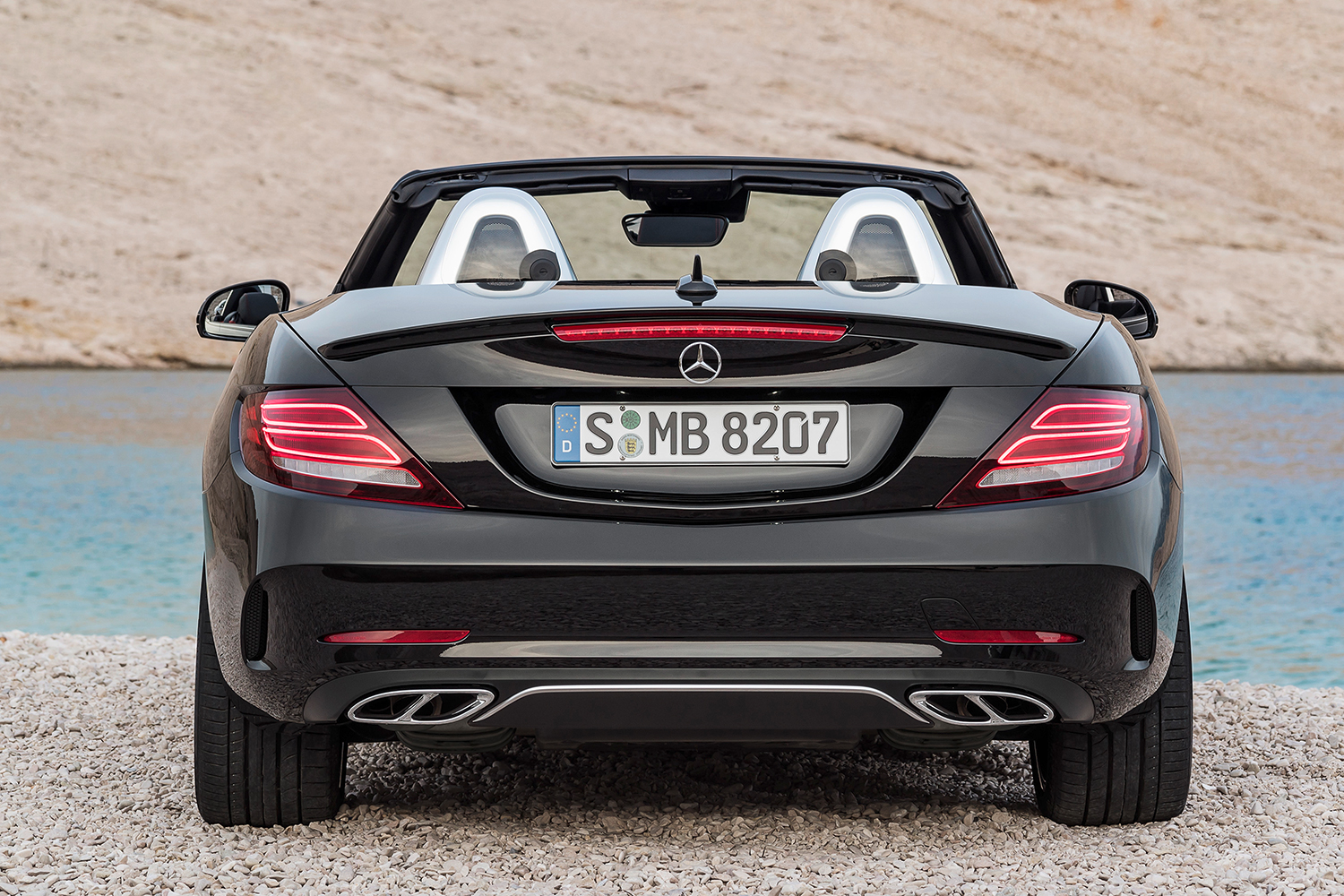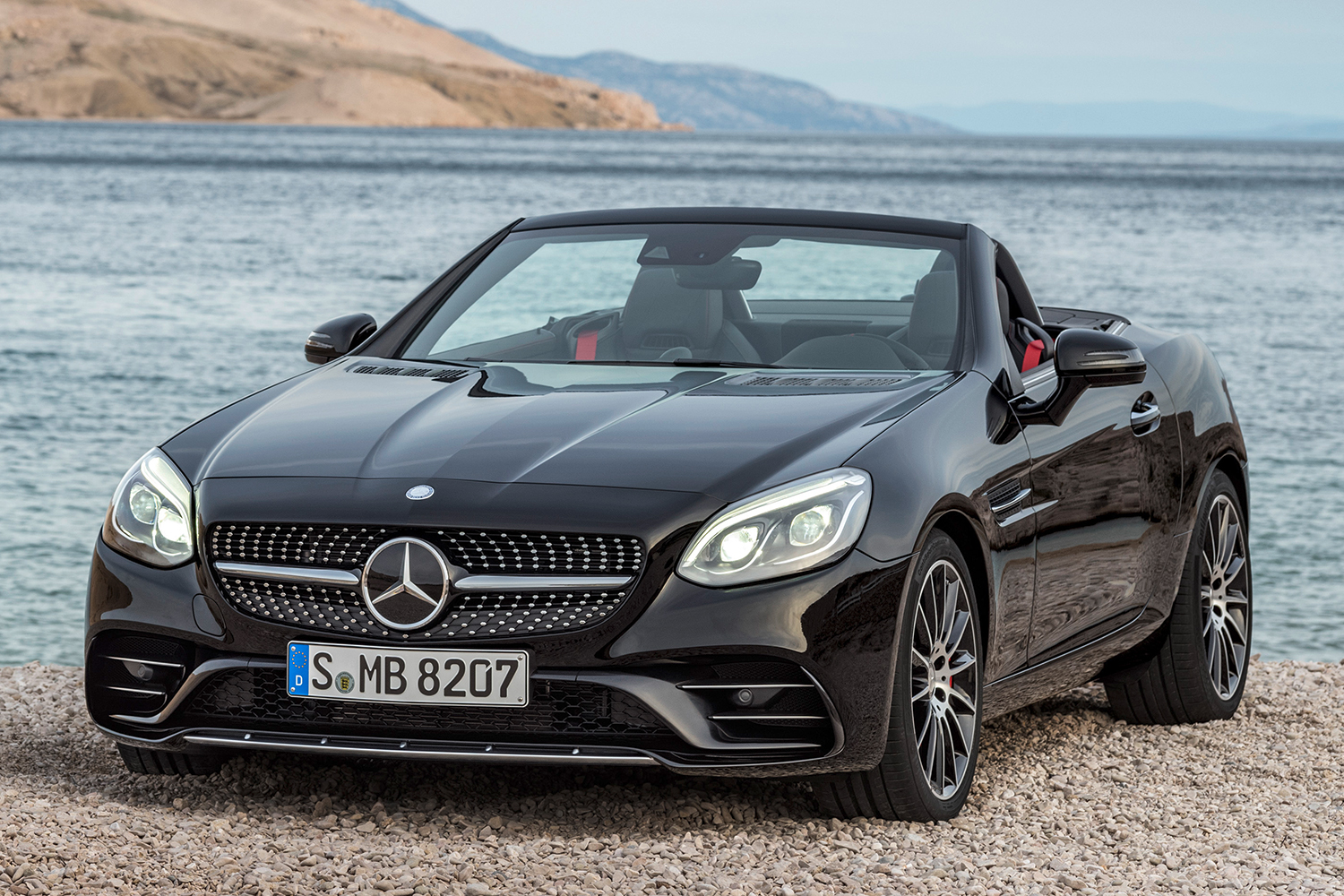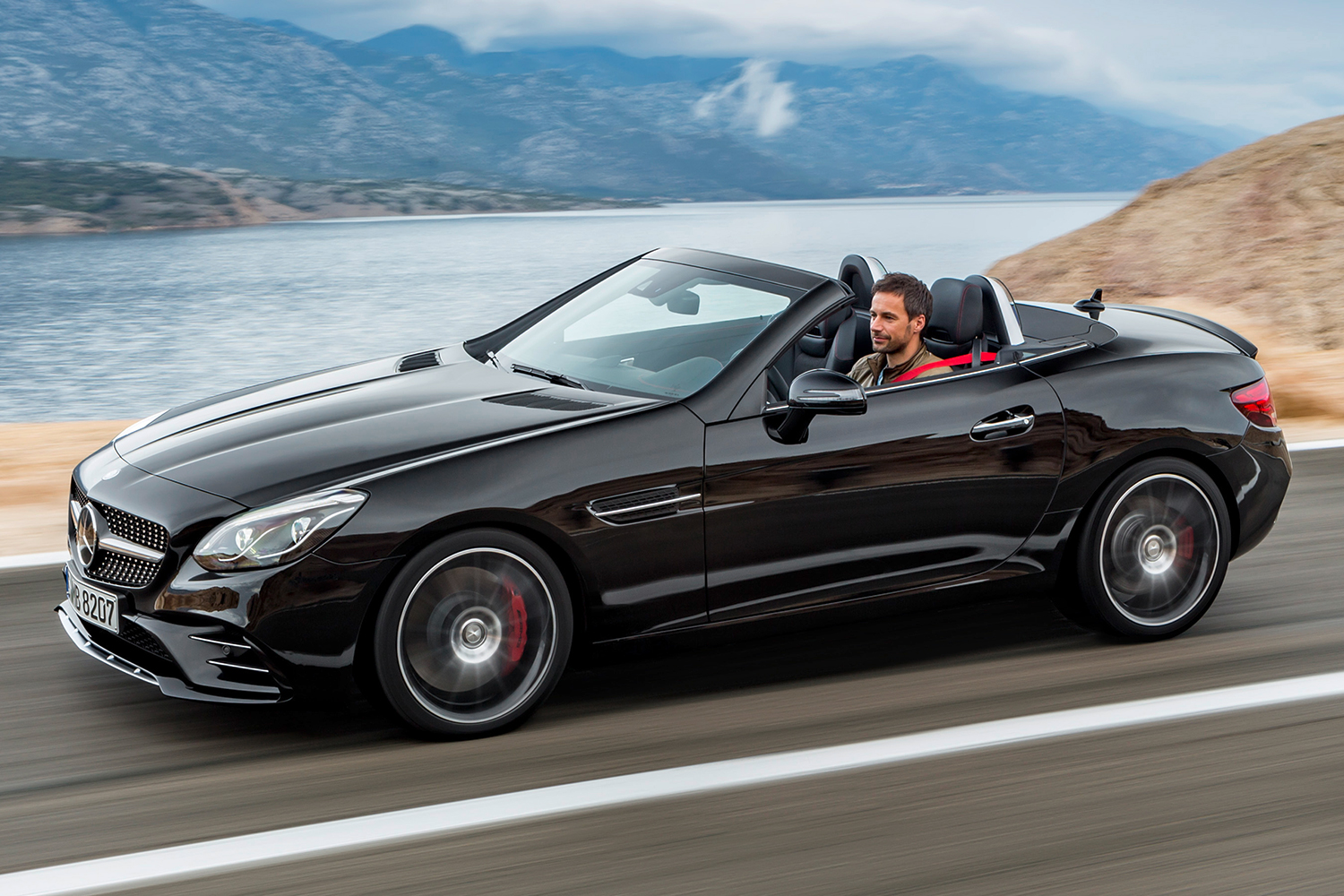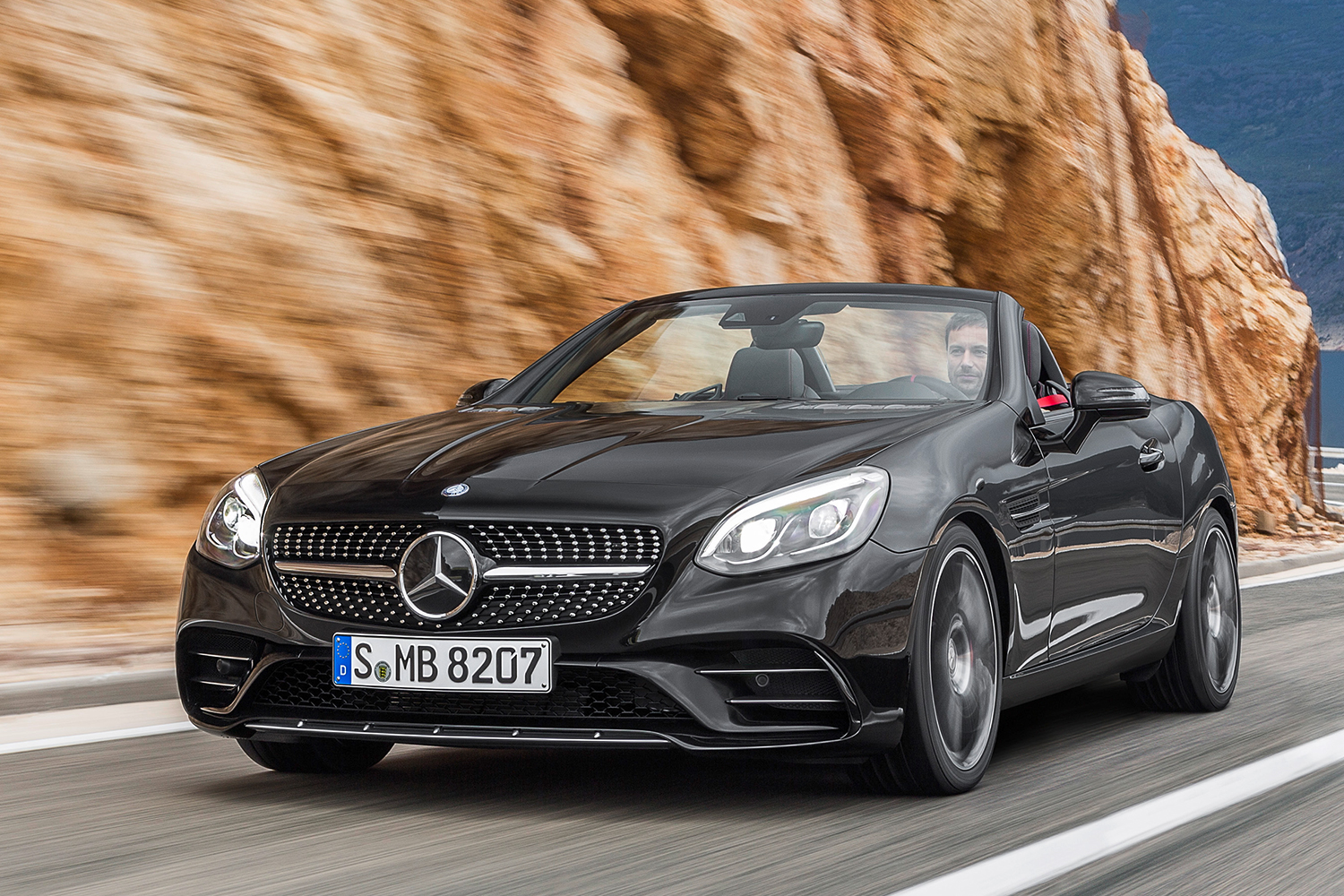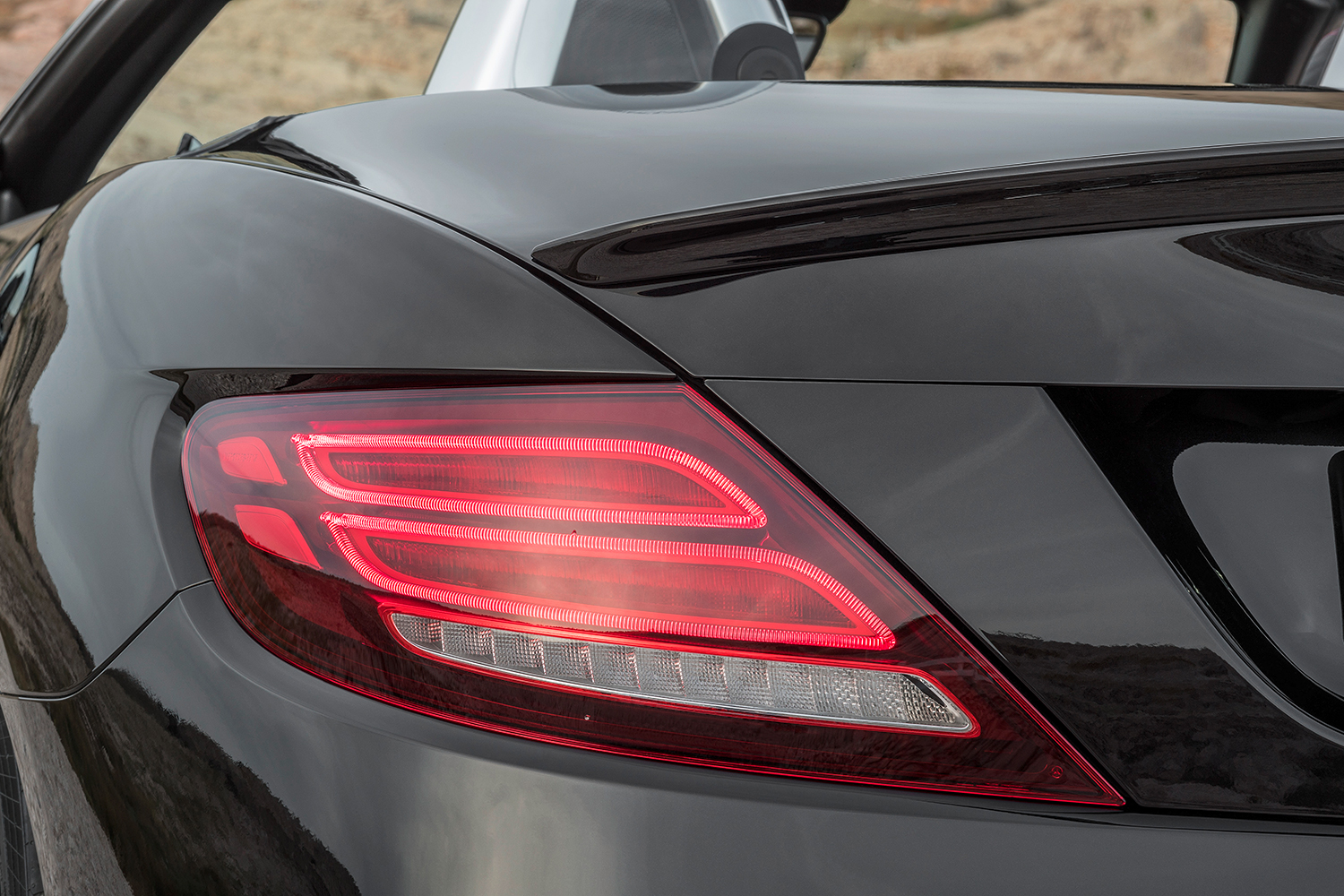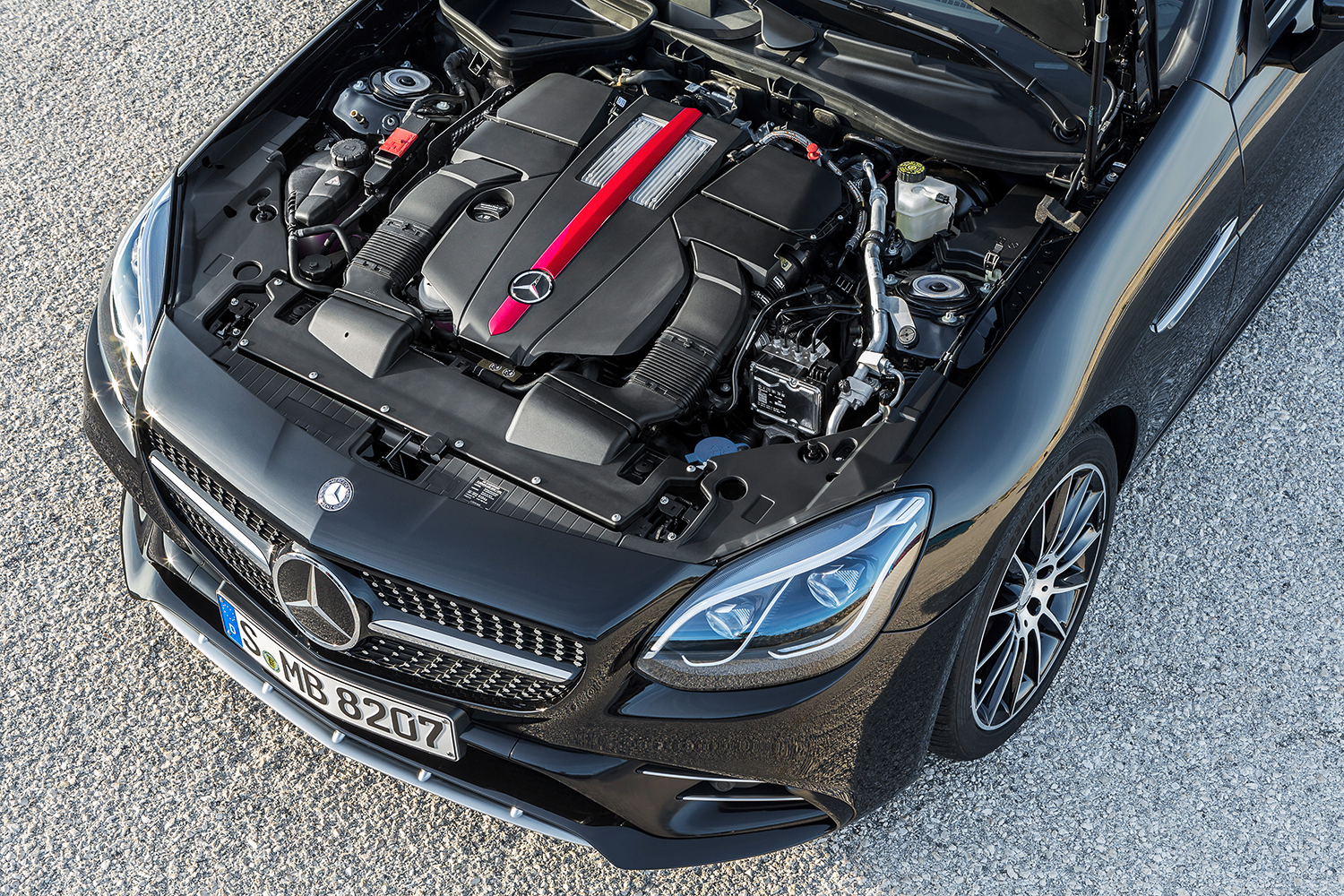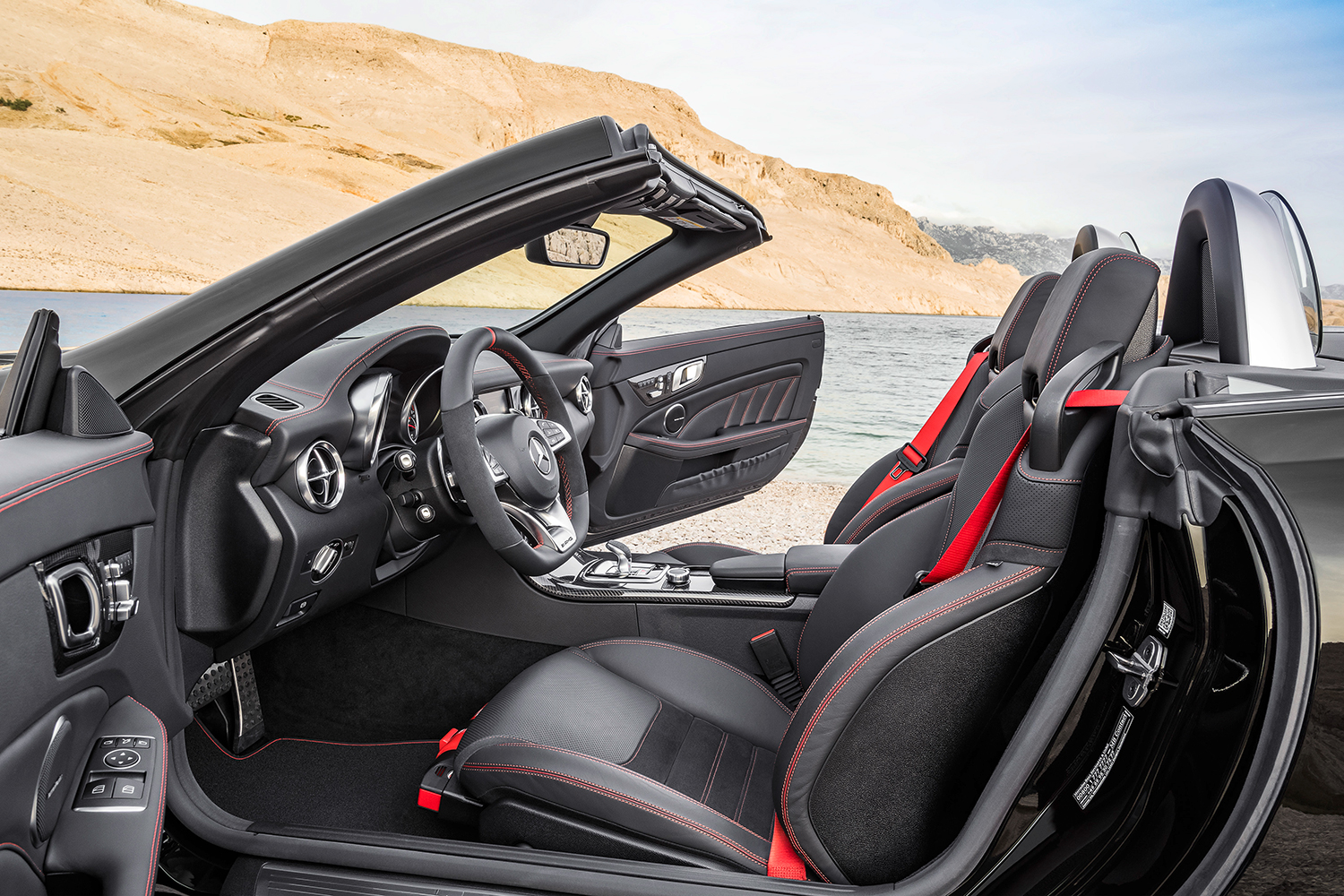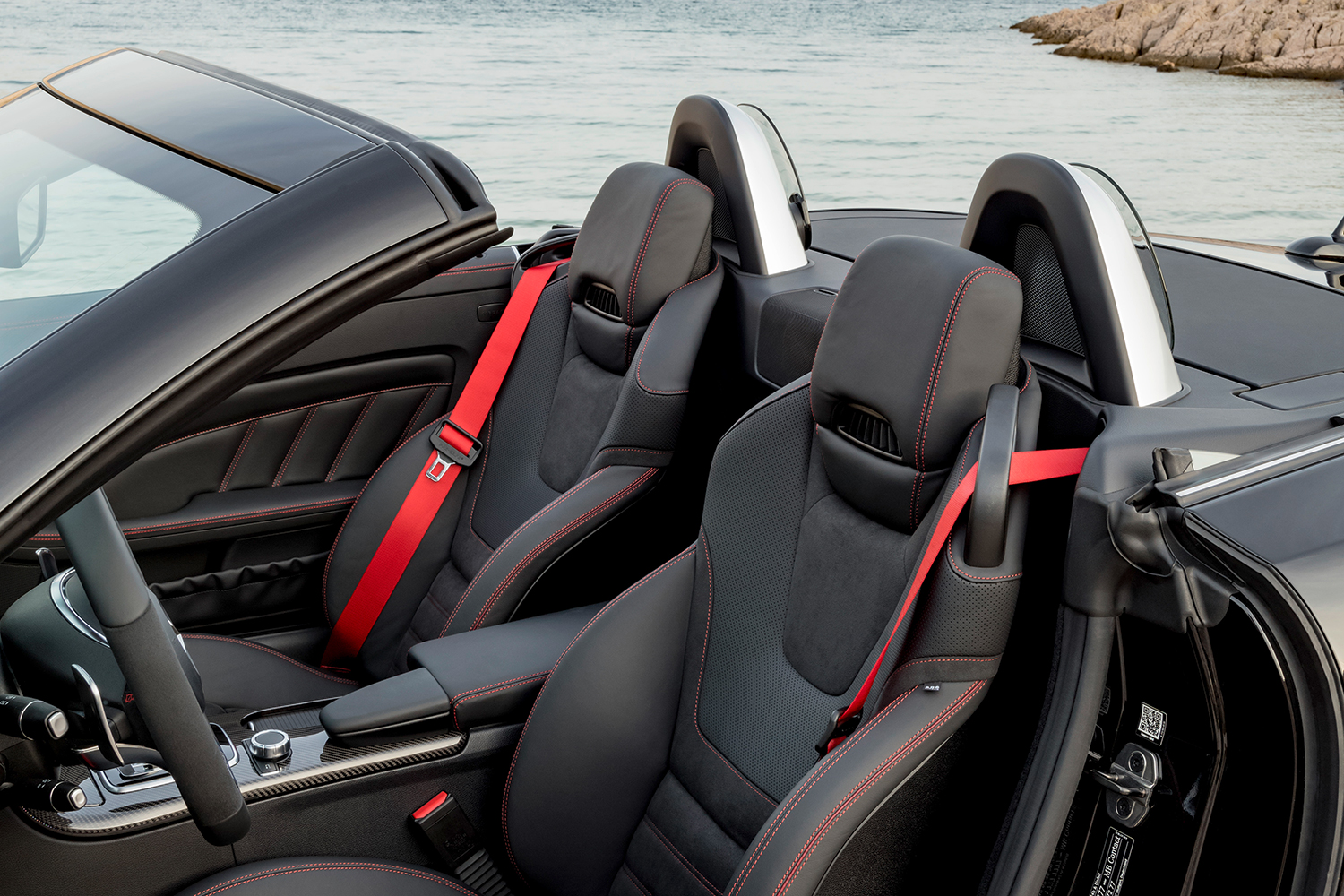The last time Mercedes stuck an SLC badge onto one of its vehicles was way back in 1981, the same year Ronald Reagan took office as President of the United States. Much has changed since then, and thus the new SLC is a far cry from the boxy, bench seat-equipped iterations of old.
Slated to replace the current SLK when it launches in spring 2016, the 2017 model year SLC will come in two variants — the SLC 300 and the Mercedes-AMG SLC 43. As with the SLK 300, the entry-level SLC 300 will equip a 2.0-liter turbocharged four-cylinder with 241 horsepower and 273 pound-feet of torque, which Mercedes says will be good for a 5.7-second sprint to 60 mph. The SLC 43, however, benefits from a 3.0-liter biturbo V6 with 362 hp and 384 lb-ft, enabling 0 to 60 to arrive in just 4.6 seconds, which is only 0.1 ticks slower than the V8-powered AMG SLK 55. There’s no mention of anything above the SLC 43 at this time, but we’re certainly not ruling it out down the road. Both cars feature a 9G-Tronic automatic transmission.
Styling-wise, the new SLC is a noticeable, but not a dramatic departure from the edgier SLK. The lines are smoother and more graceful — a reflection of Mercedes’ new design language — though the lower front bumper has been significantly retooled to elongate the front end and provide more airflow to the engine.
While both cars offer a bevy of standard features like Active Brake Assist (also known as Collision Prevention Assist Plus), a 4.5-inch gauge cluster display, Dynamic Select driving modes, and an electrohydraulic vario-roof that can be operated at speeds up to 25 mph, the AMG model is clearly a significant step up.
The front and rear axles are both exclusive for the SLC43, and an optional Handling Package takes the performance even further with a mechanical limited-slip differential out back. The steering, brakes, and suspension are significantly beefier as well, and the available AMG Ride Control package gives drivers a variety of damping options. When they’re not out carving corners, though, the available Comand infotainment system, Harman Kardon stereo, leather upholstery combinations, and ambient lighting options are there to keep them relaxed, entertained, and riding in style.
Pricing and fuel economy figures have not been released yet, but expect the SLC300 to stay competitive with the Porsche Boxster, BMW Z4, and Audi TT Roadster in the upper $40,000 range. Keep it locked to DT Cars as the official numbers will likely be released closer to the vehicle’s launch next spring.
